Electronmash - the flagship of domestic computer technology
60 years old, USSR. The manufacturing boom of computing. Special scientific, research and design organizations and enterprises began to form all over the country tirelessly.

In Kiev, the development of computer technology at that time was at a high level. After creating the first Dnepr general-purpose control vehicle, it turned out that there was simply nowhere to produce it in series. So there was a need to create a plant where computers could be mastered, produced.
"Dnieper"
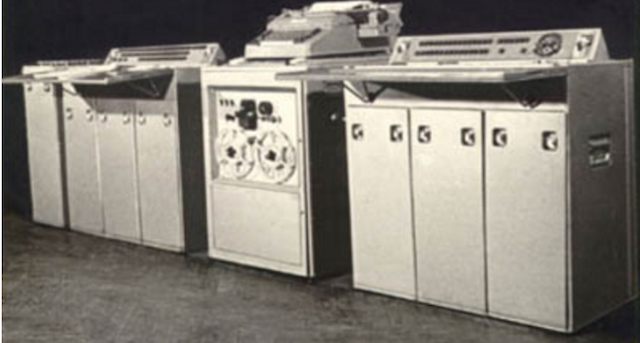
Dnipro is the first Soviet general-purpose semiconductor control computer. The machine was developed from 1958 to 1961 at the Institute of Cybernetics of the Academy of Sciences of Ukraine. Project managers were Glushkov (chief designer) and Malinovsky. Such a machine was intended for industrial process control systems. It was a machine with a binary number system, created on transistors, 26-bit (26 binary digits), two-address. Performance of 10 thousand operations per second. The memory device was on ferrite cores (which allowed to increase the reliability of the machine and reduce its dimensions), consisted of sections, which made it possible to change the volume of memory. OP capacity is 512 words, additional RAM blocks with a capacity of 3 to 512 words, additional ROM blocks with a capacity of 6 to 512 words.
A feature was the presence of a communication device with an object (USO) built into the machine for connecting it to the sensors and actuators of an object controlled from the machine. Power "Dnepr" was from a three-phase AC 220/380 V, 50 Hz. The address language developed at the Institute of Cybernetics E.L. Yushchenko is accepted as the input language.
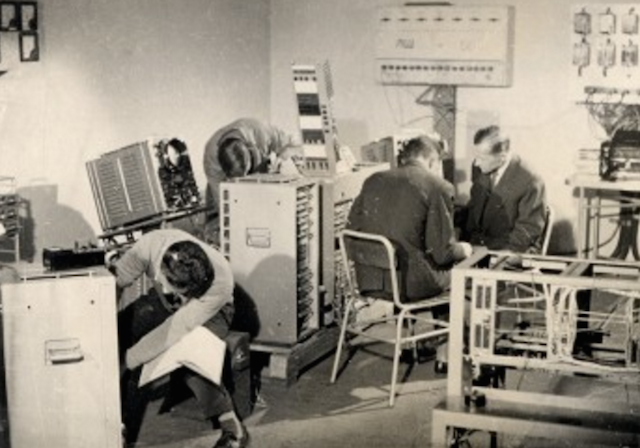
... “When the first copy of the machine came from the factory, the developers grabbed their heads. It was a continuous accumulation of parts, where about a thousand soldered joints were made poorly and constantly refused, the connectors were damaged by inept handling. It was simply impossible to debug such a machine. It turned out that the director of the plant, having heard that the machine is 6 times larger than the oscilloscope, scored students who had just graduated from school for work. Yesterday’s schoolchildren with soldering irons in their hands began to “solder” the connections into the elements of the machine and break the connectors with careless handling. As the installation date of the first UMSHN in the Bessemer workshop was approaching, the developers of the machine had to re-solder almost the entire machine and replace many connectors. Only then did the debugging process move.
500 Dnipro were produced, of which a couple of dozen were used in Ukraine, the rest in the Russian Federation, several in the republics of the Soviet Union and abroad.
In 1965, the Kiev factory of computing and control machines (VUM) began operating in Kiev on the basis of separate units of the RadioPribor plant. Initially, the plant employed 460 people. Director in those years was Apollinar Fedorovich Nezabitovsky. In 1972, VUM was transformed into the Electronmash Research and Production Association, which is considered one of the leaders in the USSR in the production of computer and control equipment.
Apollinariy Fedorovich Nezabitovsky
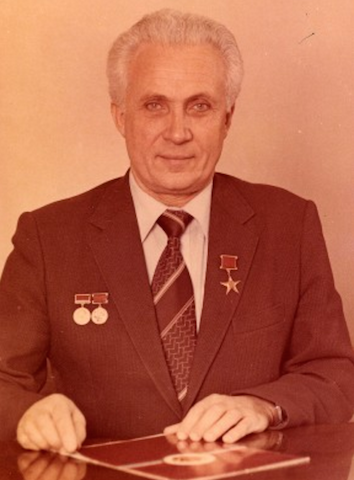
"... You can’t sympathize with all your subordinates - this is the right way to fill up the matter. Remember, there are tasks, there are deadlines, demand! And don’t go into too much detail, because you yourself will start to think that this is impossible" - words of A. F. Nezabitovsky .
Although he was not a professional in the field of computer technology, any leader could envy his energy and pressure. In a short time, he became a production manager at the Tochelectropribor plant in Kiev, and later became a director. Demanding for employees, to respect the order were respected by colleagues. There were legends about him.
From the memoirs of Golovtsev:
"... the gray-haired and helpless Appolinarius Fedorovich Nezabitovsky (in the epics -" dad ") - headed the materialization of the ideas of the great theoretician, provided them - incorporeal - with the flesh of electronic computer technology (in modern style - computers). Dad firmly held the helm of the huge ship, confidently guided it amidst waves of everyday problems, inevitable envy and rivalry, I noted workers who were kind to their children — decent wages for the results of their labor, provided housing, cheap and tasty factory meals, a vacation com in sanatoriums and their own rest homes.
Loafers, talkers of useless and empty bells hated, expelled. And everyone who was involved in the success of the famous plant was happy. It seemed that there was no limit to perfection, that development would be permanent, strengthening the stability of the colossus. "
Decisive Nezabitovsky was "dissolved" in the life of the plant. He did everything possible so that the plant was better than any other, residential buildings for employees should also be the best, as well as recreation centers. Solid pluses for the head. Soon a microdistrict appeared, which was built up with factory houses (popularly called “Nezabitovschina”).
In addition, factory kindergartens, the VUMovets pioneer camp, recreation centers on the Desna and Ros rivers, a clinic (with modern equipment at that time), and a sports and recreation complex were built. One of the best factory canteens in the city also belonged to the VUM factory.

By the way, the factory dining room is still working.

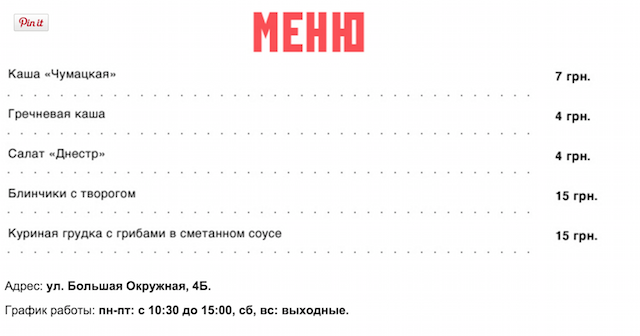
price for the past year, 15 hryvnias approximately 40 rubles
The VUM factory specialized in the production of UVM. This all left a definite imprint on the features of hardware and software that were produced at the plant. Computers were designed to work in real time.
It took a lot of effort and labor to launch the created equipment into serial production, since such machines were an innovation, specialists - pioneers only studied, mastered the "know-how". Nevertheless, the plant managed to invite qualified specialists from Severodonetsk - Afanasyev, Sergeyev, Voinarovsky, from Minsk and Kazan, from the CC of the Ukrainian SSR. The plant, not setting hands, trained young specialists, highly qualified employees. The factory opened educational institutions - technical school and technical school. An implementation department was created (its graduate KPI Aleksey Alekseevich Sladkov headed it).
The team of the department is truly a team of enthusiasts. They were faced with the task of not only introducing the available hardware and software, but also the task of formulating requirements for new tools necessary for the automation of real objects. In order to better feel the mood of the plant’s team, it’s worth remembering the work on the Whirlwind project - a test automation system for mid-flight engines of spacecraft designed to fly to the Moon. It was necessary in a short time (up to 300 seconds) to collect a large amount of information from sensors installed on the engine, and also process it in real time. The Dnepr UMSHN was substantially modernized and became the "core" of the Whirlwind system, all this was done very quickly and already in 1965 all the products were ready and delivered to the Design Bureau of the Chief Designer of Space Systems.
In 1965 - 1974, the plant manufactured more than 2.5 thousand computers (Dnepr, Dnepr-1, Dnepr-2, Dnepr-21, Dnepr-22, Dnepr-22M ”,“ EMRT-2 ”,“ EMRT-3 ”,“ KASHTAN ”,“ Mir ”,“ Mir-1 ”,“ Mir-2 ”,“ Mir-3 ”), which were developed under the guidance of V.M. Glushkov, and were the best in technical specifications and software at that time.
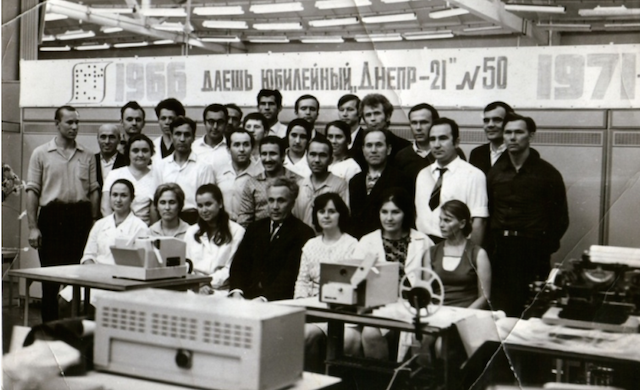
The chief designer of the Dnieper (as already mentioned) was Boris Nikolaevich Malinovsky. Together with the Institute of Cybernetics of the National Academy of Sciences of Ukraine when creating the Dnepr-2 system (chief designer - A. Kukharchuk, deputy chief designer - E. Sakaev) V. Kharitonov, D. Stoyanko, A. Sh. Factorovich took part ., Seligey O.M., Omelyanchuk, Khomyakov V.I., Galuzinsky, Strelchenko, Zaslavsky R., Bezchastny P.M., Bulka S.M.
Dnepr-2 was the first system in the USSR that could be used as a basic computing machine to create integrated control systems at industrial enterprises, research, and trade organizations.
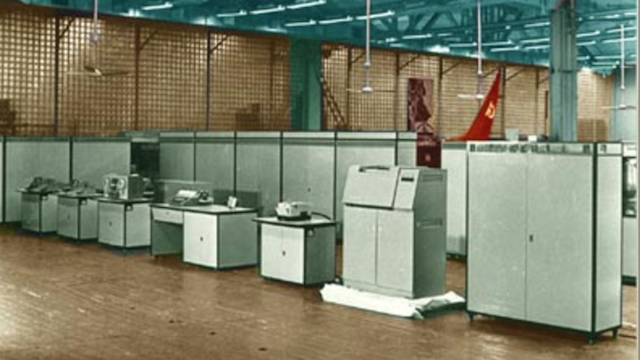
Dnepr-2
The Dnepr-2 UVS consisted of two main parts, the first part was the Dnepr-21 central computing complex and the second part was the Dnepr-22M control complex. Dnepr-21 is a universal digital computer, had a number of features that expand its capabilities and increase efficiency in solving a large class of problems. Such a UEM provided multiprogramming work (a powerful interrupt system, circuit protection of addresses, etc.), had an expanded command system that allowed implementing typical program situations with fewer operations, and made it possible to use a large number (up to 96) of external devices of any type with unified connections
used addresses and operands of variable length, it was possible to exchange information on standardized channels with other machines or specialized devices through a multiplexer, selector or free memory entry.
Dnepr-22M was designed to exchange information between the central computer of the system, the control object and the operator.
The performance of Dnepr-2 amounted to 16 thousand operations such as addition per second, the number of instructions was 177, and the capacity of the memory cell was 42 bits.
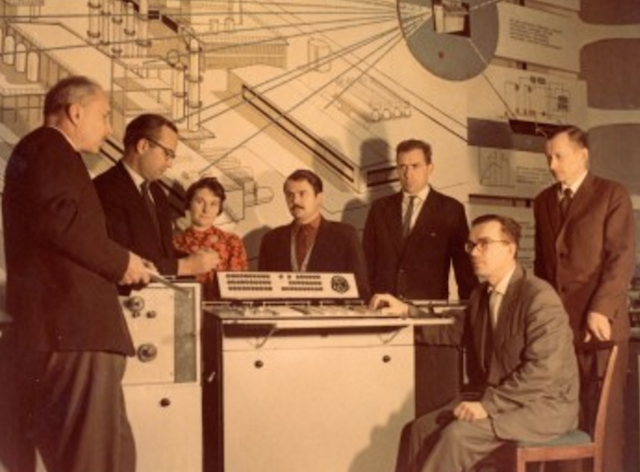
Mir-1 at the exhibition Interorgtekhnika (VDNH in 1966)
Mir-1 was presented at the international exhibition Interorgtekhnika (VDNH in 1966), was highly appreciated and was purchased by IBM. "Chestnut" was designed to automate the calculation of a batch of material for procurement, taking into account the requirements of the range and minimize residues. It was used in the clothing, metallurgy, engineering and other industries. It was the only one in the world for its purpose. It was patented in the USA, England, France, Germany, Italy, Japan.
Mir-1
The Mir-1 machine, a machine for engineering calculations, weighing 400 kg, consisted of two tables, a typewriter was mounted on one of them, and a debugging console on the other, and was powered by a three-phase AC network (380 V, 50 Hz) ), while consuming no more than 1.5 kW of energy. It also included an information exchange device, a microprogram control device, a storage device, an arithmetic device, and a power supply device.
It was a second-generation computer, it could solve such problems as systems of linear algebraic equations up to the 20th order, systems of ordinary differential equations up to the 16th order, integral equations. The computer was a hardware-firmware interpreter of the ALMIR-65 language.
The speed of the machine when performing arithmetic operations on 5-bit numbers was 200 - 300 operations per second.
An electronic typewriter with a wide carriage was used to input and output results, the print speed was 10 characters per second.
OP computer - with a volume of 4096 12-bit cells, one of the characters of the input language, a service word or identifier of a standard function was stored in the cell.
The eight-track punched tape served as external memory in such a computer, the output speed to the PL-80 puncher is up to 80 characters per second, the input speed from the FS-1501 device is up to 1500 characters per second.
It is believed that the "Mir" was the first step towards the creation of personal computers.
Already in the early 1970s, about 10 thousand people worked for the benefit of the VUM plant.
In 1972, VUM was transformed into the Electronmash research and production association. The Research Institute of Peripheral Equipment (NIIP) was opened, headed by Stanislav Sergeyevich Zabara.
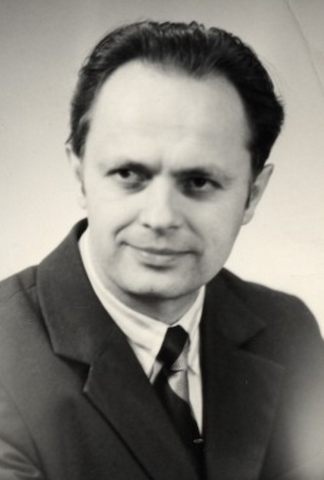
Zabara S.S.
From his memoirs: “... Institutional status allowed me to more freely determine the direction of creative research. I became interested in the problem of design automation. By common sense, I immediately cut out the highly intelligent design area from consideration, where it was difficult to count on quick results. I was more interested in routine processes engineering work, the automation of which on the one hand was amenable to algorithmization, and on the other, could manifest itself clearly in increased productivity and error-free They were also interested in the idea of informationally combining the design, production and output control of products.
For many, this direction caused aggressive skepticism, so I wanted to find associates not by coercion, but by conviction. These my comrades-students-teachers were the heads of the NIIP G.U. Veprinsky, A.D. Milner, V.P. Sidorenko, O.D. Rukkas. I tell the students because I convinced them to believe in the idea and did the initial setting of the tasks, and as teachers, because then they explained to me what difficult problems they encounter when deepening into these tasks.
This is how the systems came about: an automated workstation for design engineering in radio electronics (mainly printed circuit boards) ARM2-01, the main developers G.Yu. Veprinsky, M.A. Drozhdin, E.Sh. Raise; automated workstation for microprogram and circuit design ARM2-05, the main developers A.D. Milner, A.V. Bogachev, M. B. Batkovsky, V. V. Yakovlev; control system of digital and analog blocks of elements KODIAK, the main developers V.P. Sidorenko, O.D.Rukkas, E.N.Chichirin, N.S. Bershtein; a system of automated manufacturing and control of wire installation, the main performers are the same as in the KODIAK system.
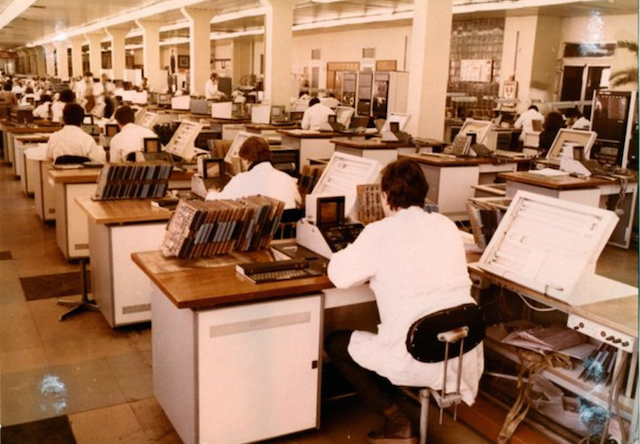
The peculiarity of all these systems was that they naturally combined automatic and interactive design methods. They maximally (due to our abilities) took into account the technological requirements of production and the design results (information on machine carriers) were directly used by the executive equipment in production.
These systems found widespread use at the plant, and were also replicated for other enterprises. Without exaggeration, we can say that they radically influenced the entire assembly and debugging production cycle ... "
The development and development of a wide range of external devices, such as magnetic disk and tape drives, alphanumeric and graphic screen panels, printing devices, plotters, graphic information input devices, seismic information recording devices, data transmission multiplexers, began. There was a need for the construction of a precision mechanics workshop, a testing ground, and a tool workshop. In addition to the VUM plant, the Electronmash research and production association also included the research and design institute of peripheral equipment, the Kiev specialized commissioning department and at different times the Vinnitsa Automation Facilities Terminal, the Odessa Electronmash Computing Machines Plant , Glukhovsky computer engineering plant,
In 1970, the production of the first models of the Aggregate System of Computer Aids (M 3000) was mastered. The team of the VUM plant was given the task of moving from small-scale to multi-series production of computers. In 1973, a group of designers and developers created a new computing complex - M-4030.
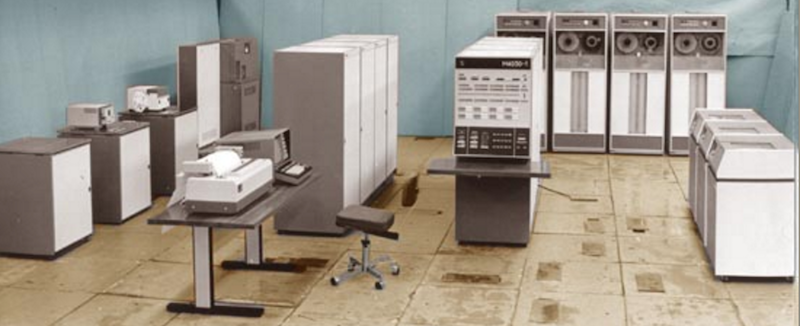
M-4030
For its development and development of serial production, the State Prize of the Ukrainian SSR in the field of science and technology was even awarded. In 1974, the production of the M6000 and M400 computers was mastered, and after 4 years, the models of the international system of small computers - the SM computer - were developed and put into serial production.
In 1981, the USSR State Prize was awarded for the development and organization of serial production of SM-3, SM-4 complexes. In the creation of computer technology directly involved specialists in the manufacture of computer equipment from a number of foreign firms. SM-3 is a vivid example of such cooperation. Bulgaria, Germany, Hungary, Cuba, Poland, Czechoslovakia took part in the development and production of this complex.
The control computer systems were exported to Algeria, Bulgaria, Hungary, Poland, India, Finland, Sweden, Yugoslavia, Cuba. For such exports, Electronmash was awarded the Golden Mercury honorary prize.
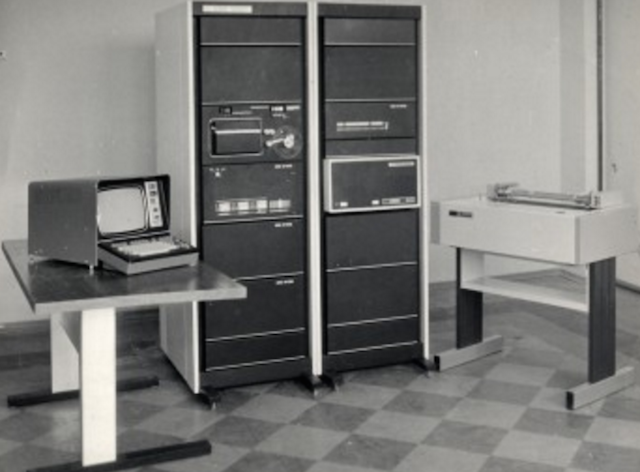
SM-4
Since 1973, Electronmash, through the SM computer, mainly collaborated with the INEUM Moscow Institute, together with which new series of machines were developed and about 30 thousand units were manufactured (M4030, M4030-1, M3000, M4000, M6000, M400, SM- 3, SM-4, SM1800, SM 1420, ARM2.01, SM 1803, SM 1804, SM 1814, SM 1810, SM 1810.13.01 Nyvka, SM 1425, SM 1702)
.
In 1984, Electronmash employees were awarded the State Prize of the Ukrainian SSR for the development of an automated complex for the diagnostic control of complex blocks of electronic equipment - the KODIAK system.
Kodiak
The original automated complex for the diagnostic control of complex blocks of electronic equipment. The problem-oriented Kodiak complex was created to solve a difficult scientific and technical problem - the output control of blocks of elements of high complexity.
Such a complex consisted of a central computer SM-4 and a number of control devices for logical (UKBL) and analog (UKBA) blocks. Using Kodiak
it became possible to supply a large number of consecutive test signals to the object, such as programmable, pseudo-random, pseudo-dynamic test sets. The response to these signals was analyzed by a special logic analyzer. The complex was equipped with controlled measuring instruments, sources of constant and pulse voltage. This all shortened the debugging cycle of all types of computers, increasing their reliability.
In 1988, Electronmash completed development and launched the first personal computers, Search-1 and Nyvka.
In 1990, the VUM PO Elektronmash plant produced a small series of SM1820 machines called Nyvka.
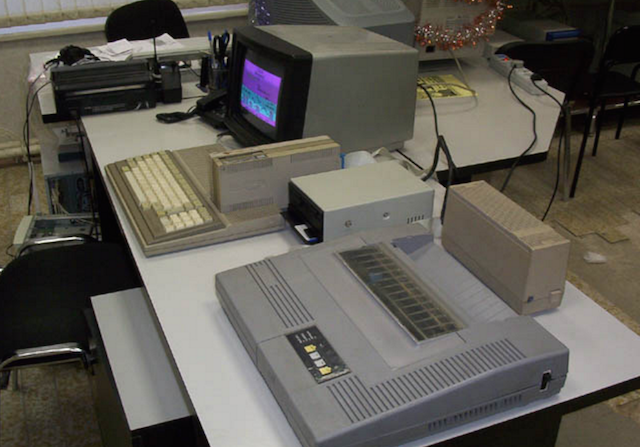
Search - 16-bit personal computer (clone ІBM PC XT, 1988 project)
The enterprise organized the development and creation of Н2С1 (Gerashchenko K.V., Yarmosh A.P.) for the Ministry of Defense and ADP units (Aptekman B.O.) for nuclear energy.
Electronmash participated with the Petrel Leningrad Institute in the Buran space project.
In 1986, Electronmash employees successfully completed the state task for the manufacture of printed circuit boards for remote control of tractors, which were used to eliminate the consequences of the Chernobyl accident.
In 1986, for health reasons A.F. Nezabitovsky retired. A.G. became the general director of the association Nazarchuk, and with his departure in 1990 to work in the Kiev City Council, V.I. became the head of "Electronmash" Mova.
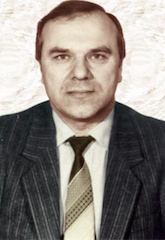
Viktor Ivanovich Mova devoted most of his working life to the plant, he did a lot for the development of the social sphere and production. As a chief engineer since 1987, he directly supervised the creation and implementation of SM1814, SM1425, SM1702 and personal computers in production.
In 1987, an agreement on cooperation between Elektronmash and the Kiev Polytechnic Institute was prepared to further improve the training and distribution of specialists with higher education. The factory has always relied on young professionals who took with their enthusiasm, the desire to create something new.
In early 1988, Electronmash began to work on state accounting and financing. And after 1990, global changes began, not only in the country, but also in the enterprise.
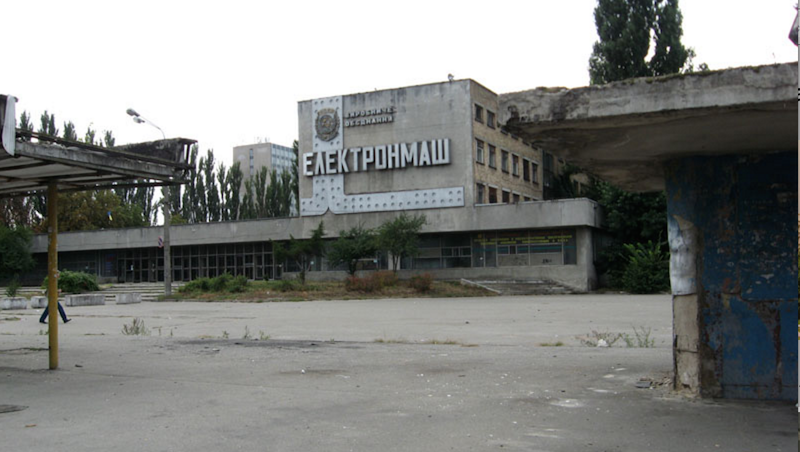
What we have now, such a giant as Electronmash, with tens of thousands of employees, developed infrastructure, has turned (as one person noted in the forum):
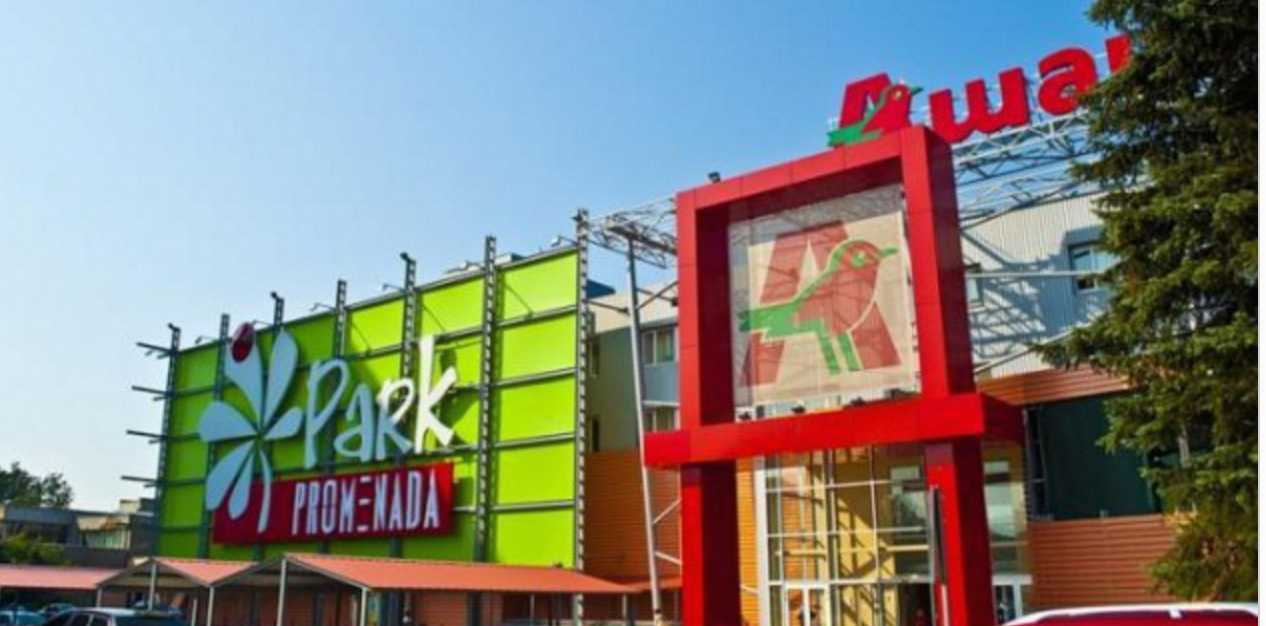
"... turned into a shame, it now stands as a dumb lesson for those who live nearby, often in the houses built by this plant, and not the Khrushchevs — small houses, and every VUM ovskiy house was a special project, construction was fast when the director was Apollinariy Fedorovich Nezabitovsky, thank you very much for that, from thousands of people, and a low bow. And today all residents okr gi are forced to return to their factory, but already without a dressing gown, and for groceries in Auchan, or for Chinese telly phones in the former workshop of floppy disks, and if you are not local and there is no money, you can settle in a hotel, well, right on checkpoint.
Although in 1993 at the "Electronmash" mastered the development and production of electronic cash registers. More than 260 thousand pieces of ECCA of 25 models and modifications were produced. In 2014, serial production of the new EKKA Gnome 302.05 model was mastered.
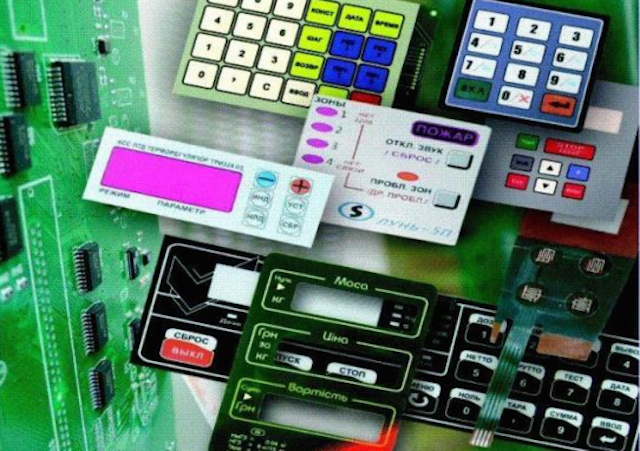
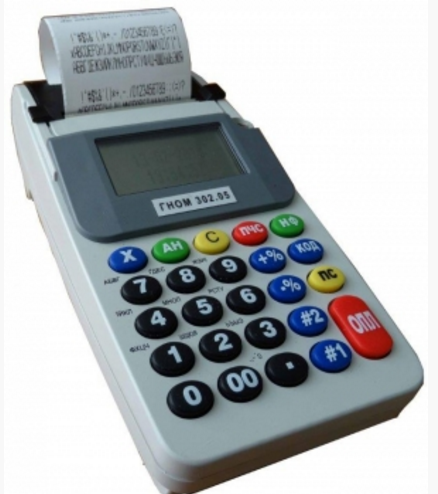
new EKKA Dwarf model 302.05
Over the years, new technologies in the field of power electronics have been mastered at the production site , and energy-saving, environmentally safe power products for on-board electric networks of urban transport have been mass-produced: trolleybuses, trams, subway cars and railways.
In that year, it was just 50 years since the creation of Electronmash. According to the leadership, there are plans for the future (hopefully, maybe even feasible).
Electronmash

In Kiev, the development of computer technology at that time was at a high level. After creating the first Dnepr general-purpose control vehicle, it turned out that there was simply nowhere to produce it in series. So there was a need to create a plant where computers could be mastered, produced.
"Dnieper"

Dnipro is the first Soviet general-purpose semiconductor control computer. The machine was developed from 1958 to 1961 at the Institute of Cybernetics of the Academy of Sciences of Ukraine. Project managers were Glushkov (chief designer) and Malinovsky. Such a machine was intended for industrial process control systems. It was a machine with a binary number system, created on transistors, 26-bit (26 binary digits), two-address. Performance of 10 thousand operations per second. The memory device was on ferrite cores (which allowed to increase the reliability of the machine and reduce its dimensions), consisted of sections, which made it possible to change the volume of memory. OP capacity is 512 words, additional RAM blocks with a capacity of 3 to 512 words, additional ROM blocks with a capacity of 6 to 512 words.
A feature was the presence of a communication device with an object (USO) built into the machine for connecting it to the sensors and actuators of an object controlled from the machine. Power "Dnepr" was from a three-phase AC 220/380 V, 50 Hz. The address language developed at the Institute of Cybernetics E.L. Yushchenko is accepted as the input language.

... “When the first copy of the machine came from the factory, the developers grabbed their heads. It was a continuous accumulation of parts, where about a thousand soldered joints were made poorly and constantly refused, the connectors were damaged by inept handling. It was simply impossible to debug such a machine. It turned out that the director of the plant, having heard that the machine is 6 times larger than the oscilloscope, scored students who had just graduated from school for work. Yesterday’s schoolchildren with soldering irons in their hands began to “solder” the connections into the elements of the machine and break the connectors with careless handling. As the installation date of the first UMSHN in the Bessemer workshop was approaching, the developers of the machine had to re-solder almost the entire machine and replace many connectors. Only then did the debugging process move.
500 Dnipro were produced, of which a couple of dozen were used in Ukraine, the rest in the Russian Federation, several in the republics of the Soviet Union and abroad.
In 1965, the Kiev factory of computing and control machines (VUM) began operating in Kiev on the basis of separate units of the RadioPribor plant. Initially, the plant employed 460 people. Director in those years was Apollinar Fedorovich Nezabitovsky. In 1972, VUM was transformed into the Electronmash Research and Production Association, which is considered one of the leaders in the USSR in the production of computer and control equipment.
Apollinariy Fedorovich Nezabitovsky

"... You can’t sympathize with all your subordinates - this is the right way to fill up the matter. Remember, there are tasks, there are deadlines, demand! And don’t go into too much detail, because you yourself will start to think that this is impossible" - words of A. F. Nezabitovsky .
Although he was not a professional in the field of computer technology, any leader could envy his energy and pressure. In a short time, he became a production manager at the Tochelectropribor plant in Kiev, and later became a director. Demanding for employees, to respect the order were respected by colleagues. There were legends about him.
From the memoirs of Golovtsev:
"... the gray-haired and helpless Appolinarius Fedorovich Nezabitovsky (in the epics -" dad ") - headed the materialization of the ideas of the great theoretician, provided them - incorporeal - with the flesh of electronic computer technology (in modern style - computers). Dad firmly held the helm of the huge ship, confidently guided it amidst waves of everyday problems, inevitable envy and rivalry, I noted workers who were kind to their children — decent wages for the results of their labor, provided housing, cheap and tasty factory meals, a vacation com in sanatoriums and their own rest homes.
Loafers, talkers of useless and empty bells hated, expelled. And everyone who was involved in the success of the famous plant was happy. It seemed that there was no limit to perfection, that development would be permanent, strengthening the stability of the colossus. "
Decisive Nezabitovsky was "dissolved" in the life of the plant. He did everything possible so that the plant was better than any other, residential buildings for employees should also be the best, as well as recreation centers. Solid pluses for the head. Soon a microdistrict appeared, which was built up with factory houses (popularly called “Nezabitovschina”).
In addition, factory kindergartens, the VUMovets pioneer camp, recreation centers on the Desna and Ros rivers, a clinic (with modern equipment at that time), and a sports and recreation complex were built. One of the best factory canteens in the city also belonged to the VUM factory.

By the way, the factory dining room is still working.


price for the past year, 15 hryvnias approximately 40 rubles
The VUM factory specialized in the production of UVM. This all left a definite imprint on the features of hardware and software that were produced at the plant. Computers were designed to work in real time.
It took a lot of effort and labor to launch the created equipment into serial production, since such machines were an innovation, specialists - pioneers only studied, mastered the "know-how". Nevertheless, the plant managed to invite qualified specialists from Severodonetsk - Afanasyev, Sergeyev, Voinarovsky, from Minsk and Kazan, from the CC of the Ukrainian SSR. The plant, not setting hands, trained young specialists, highly qualified employees. The factory opened educational institutions - technical school and technical school. An implementation department was created (its graduate KPI Aleksey Alekseevich Sladkov headed it).
Alexey Alekseevich Sladkov - master of the computer adjustment section. After serving in the army, he entered the KPI. He graduated from the faculty, which was then called primitively “Calculating machines”. I had to continue my studies in graduate school as an excellent student, but was tempted by the promise of the director of the plant to provide him with an apartment, and therefore ended up in my workshop.
In the field of electronics, he was just an ace, and this was a very important point in the last stage of work on the machine - its adjustment before being transferred to the customer. Thanks to him, a computer support service was subsequently organized, that is, the launch of the machine directly at the consumer. We were of the same age, but he had already managed to divorce his wife and lived with his sister. At the same time, he tirelessly repeated that he loved his ex-wife, and it was very difficult for him without her. Periodically, he agreed with his ex-wife about a meeting on her territory, but life together did not last more than two to three days. With this relentless love, he did not disdain to date sexually with other women. For his subtle humor, bordering on sarcasm, a large half of the female staff of our workshop was in love with him.
The team of the department is truly a team of enthusiasts. They were faced with the task of not only introducing the available hardware and software, but also the task of formulating requirements for new tools necessary for the automation of real objects. In order to better feel the mood of the plant’s team, it’s worth remembering the work on the Whirlwind project - a test automation system for mid-flight engines of spacecraft designed to fly to the Moon. It was necessary in a short time (up to 300 seconds) to collect a large amount of information from sensors installed on the engine, and also process it in real time. The Dnepr UMSHN was substantially modernized and became the "core" of the Whirlwind system, all this was done very quickly and already in 1965 all the products were ready and delivered to the Design Bureau of the Chief Designer of Space Systems.
The introduction of the Whirlwind system has significantly reduced the testing time of marching engines of the lunar. And the fact that the Soviet Union was the first to fly to the moon, fly around and take pictures of the far side of the moon, soft landing of the apparatus on the moon, is also a part of our work. We remember this with pride and will always remember and be proud.
In 1965 - 1974, the plant manufactured more than 2.5 thousand computers (Dnepr, Dnepr-1, Dnepr-2, Dnepr-21, Dnepr-22, Dnepr-22M ”,“ EMRT-2 ”,“ EMRT-3 ”,“ KASHTAN ”,“ Mir ”,“ Mir-1 ”,“ Mir-2 ”,“ Mir-3 ”), which were developed under the guidance of V.M. Glushkov, and were the best in technical specifications and software at that time.

The chief designer of the Dnieper (as already mentioned) was Boris Nikolaevich Malinovsky. Together with the Institute of Cybernetics of the National Academy of Sciences of Ukraine when creating the Dnepr-2 system (chief designer - A. Kukharchuk, deputy chief designer - E. Sakaev) V. Kharitonov, D. Stoyanko, A. Sh. Factorovich took part ., Seligey O.M., Omelyanchuk, Khomyakov V.I., Galuzinsky, Strelchenko, Zaslavsky R., Bezchastny P.M., Bulka S.M.
Dnepr-2 was the first system in the USSR that could be used as a basic computing machine to create integrated control systems at industrial enterprises, research, and trade organizations.

Dnepr-2
The Dnepr-2 UVS consisted of two main parts, the first part was the Dnepr-21 central computing complex and the second part was the Dnepr-22M control complex. Dnepr-21 is a universal digital computer, had a number of features that expand its capabilities and increase efficiency in solving a large class of problems. Such a UEM provided multiprogramming work (a powerful interrupt system, circuit protection of addresses, etc.), had an expanded command system that allowed implementing typical program situations with fewer operations, and made it possible to use a large number (up to 96) of external devices of any type with unified connections
used addresses and operands of variable length, it was possible to exchange information on standardized channels with other machines or specialized devices through a multiplexer, selector or free memory entry.
Dnepr-22M was designed to exchange information between the central computer of the system, the control object and the operator.
The performance of Dnepr-2 amounted to 16 thousand operations such as addition per second, the number of instructions was 177, and the capacity of the memory cell was 42 bits.

Mir-1 at the exhibition Interorgtekhnika (VDNH in 1966)
Mir-1 was presented at the international exhibition Interorgtekhnika (VDNH in 1966), was highly appreciated and was purchased by IBM. "Chestnut" was designed to automate the calculation of a batch of material for procurement, taking into account the requirements of the range and minimize residues. It was used in the clothing, metallurgy, engineering and other industries. It was the only one in the world for its purpose. It was patented in the USA, England, France, Germany, Italy, Japan.
Mir-1
The Mir-1 machine, a machine for engineering calculations, weighing 400 kg, consisted of two tables, a typewriter was mounted on one of them, and a debugging console on the other, and was powered by a three-phase AC network (380 V, 50 Hz) ), while consuming no more than 1.5 kW of energy. It also included an information exchange device, a microprogram control device, a storage device, an arithmetic device, and a power supply device.
It was a second-generation computer, it could solve such problems as systems of linear algebraic equations up to the 20th order, systems of ordinary differential equations up to the 16th order, integral equations. The computer was a hardware-firmware interpreter of the ALMIR-65 language.
The speed of the machine when performing arithmetic operations on 5-bit numbers was 200 - 300 operations per second.
An electronic typewriter with a wide carriage was used to input and output results, the print speed was 10 characters per second.
OP computer - with a volume of 4096 12-bit cells, one of the characters of the input language, a service word or identifier of a standard function was stored in the cell.
The eight-track punched tape served as external memory in such a computer, the output speed to the PL-80 puncher is up to 80 characters per second, the input speed from the FS-1501 device is up to 1500 characters per second.
It is believed that the "Mir" was the first step towards the creation of personal computers.
Already in the early 1970s, about 10 thousand people worked for the benefit of the VUM plant.
In 1972, VUM was transformed into the Electronmash research and production association. The Research Institute of Peripheral Equipment (NIIP) was opened, headed by Stanislav Sergeyevich Zabara.

Zabara S.S.
From his memoirs: “... Institutional status allowed me to more freely determine the direction of creative research. I became interested in the problem of design automation. By common sense, I immediately cut out the highly intelligent design area from consideration, where it was difficult to count on quick results. I was more interested in routine processes engineering work, the automation of which on the one hand was amenable to algorithmization, and on the other, could manifest itself clearly in increased productivity and error-free They were also interested in the idea of informationally combining the design, production and output control of products.
For many, this direction caused aggressive skepticism, so I wanted to find associates not by coercion, but by conviction. These my comrades-students-teachers were the heads of the NIIP G.U. Veprinsky, A.D. Milner, V.P. Sidorenko, O.D. Rukkas. I tell the students because I convinced them to believe in the idea and did the initial setting of the tasks, and as teachers, because then they explained to me what difficult problems they encounter when deepening into these tasks.
This is how the systems came about: an automated workstation for design engineering in radio electronics (mainly printed circuit boards) ARM2-01, the main developers G.Yu. Veprinsky, M.A. Drozhdin, E.Sh. Raise; automated workstation for microprogram and circuit design ARM2-05, the main developers A.D. Milner, A.V. Bogachev, M. B. Batkovsky, V. V. Yakovlev; control system of digital and analog blocks of elements KODIAK, the main developers V.P. Sidorenko, O.D.Rukkas, E.N.Chichirin, N.S. Bershtein; a system of automated manufacturing and control of wire installation, the main performers are the same as in the KODIAK system.

The peculiarity of all these systems was that they naturally combined automatic and interactive design methods. They maximally (due to our abilities) took into account the technological requirements of production and the design results (information on machine carriers) were directly used by the executive equipment in production.
These systems found widespread use at the plant, and were also replicated for other enterprises. Without exaggeration, we can say that they radically influenced the entire assembly and debugging production cycle ... "
The development and development of a wide range of external devices, such as magnetic disk and tape drives, alphanumeric and graphic screen panels, printing devices, plotters, graphic information input devices, seismic information recording devices, data transmission multiplexers, began. There was a need for the construction of a precision mechanics workshop, a testing ground, and a tool workshop. In addition to the VUM plant, the Electronmash research and production association also included the research and design institute of peripheral equipment, the Kiev specialized commissioning department and at different times the Vinnitsa Automation Facilities Terminal, the Odessa Electronmash Computing Machines Plant , Glukhovsky computer engineering plant,
In 1970, the production of the first models of the Aggregate System of Computer Aids (M 3000) was mastered. The team of the VUM plant was given the task of moving from small-scale to multi-series production of computers. In 1973, a group of designers and developers created a new computing complex - M-4030.

M-4030
For its development and development of serial production, the State Prize of the Ukrainian SSR in the field of science and technology was even awarded. In 1974, the production of the M6000 and M400 computers was mastered, and after 4 years, the models of the international system of small computers - the SM computer - were developed and put into serial production.
In 1981, the USSR State Prize was awarded for the development and organization of serial production of SM-3, SM-4 complexes. In the creation of computer technology directly involved specialists in the manufacture of computer equipment from a number of foreign firms. SM-3 is a vivid example of such cooperation. Bulgaria, Germany, Hungary, Cuba, Poland, Czechoslovakia took part in the development and production of this complex.
The control computer systems were exported to Algeria, Bulgaria, Hungary, Poland, India, Finland, Sweden, Yugoslavia, Cuba. For such exports, Electronmash was awarded the Golden Mercury honorary prize.

SM-4
Since 1973, Electronmash, through the SM computer, mainly collaborated with the INEUM Moscow Institute, together with which new series of machines were developed and about 30 thousand units were manufactured (M4030, M4030-1, M3000, M4000, M6000, M400, SM- 3, SM-4, SM1800, SM 1420, ARM2.01, SM 1803, SM 1804, SM 1814, SM 1810, SM 1810.13.01 Nyvka, SM 1425, SM 1702)
.
In 1984, Electronmash employees were awarded the State Prize of the Ukrainian SSR for the development of an automated complex for the diagnostic control of complex blocks of electronic equipment - the KODIAK system.
Kodiak
The original automated complex for the diagnostic control of complex blocks of electronic equipment. The problem-oriented Kodiak complex was created to solve a difficult scientific and technical problem - the output control of blocks of elements of high complexity.
Such a complex consisted of a central computer SM-4 and a number of control devices for logical (UKBL) and analog (UKBA) blocks. Using Kodiak
it became possible to supply a large number of consecutive test signals to the object, such as programmable, pseudo-random, pseudo-dynamic test sets. The response to these signals was analyzed by a special logic analyzer. The complex was equipped with controlled measuring instruments, sources of constant and pulse voltage. This all shortened the debugging cycle of all types of computers, increasing their reliability.
In 1988, Electronmash completed development and launched the first personal computers, Search-1 and Nyvka.
In 1990, the VUM PO Elektronmash plant produced a small series of SM1820 machines called Nyvka.

Search - 16-bit personal computer (clone ІBM PC XT, 1988 project)
The enterprise organized the development and creation of Н2С1 (Gerashchenko K.V., Yarmosh A.P.) for the Ministry of Defense and ADP units (Aptekman B.O.) for nuclear energy.
Electronmash participated with the Petrel Leningrad Institute in the Buran space project.
In 1986, Electronmash employees successfully completed the state task for the manufacture of printed circuit boards for remote control of tractors, which were used to eliminate the consequences of the Chernobyl accident.
In 1986, for health reasons A.F. Nezabitovsky retired. A.G. became the general director of the association Nazarchuk, and with his departure in 1990 to work in the Kiev City Council, V.I. became the head of "Electronmash" Mova.

Viktor Ivanovich Mova devoted most of his working life to the plant, he did a lot for the development of the social sphere and production. As a chief engineer since 1987, he directly supervised the creation and implementation of SM1814, SM1425, SM1702 and personal computers in production.
In 1987, an agreement on cooperation between Elektronmash and the Kiev Polytechnic Institute was prepared to further improve the training and distribution of specialists with higher education. The factory has always relied on young professionals who took with their enthusiasm, the desire to create something new.
In early 1988, Electronmash began to work on state accounting and financing. And after 1990, global changes began, not only in the country, but also in the enterprise.

What we have now, such a giant as Electronmash, with tens of thousands of employees, developed infrastructure, has turned (as one person noted in the forum):

"... turned into a shame, it now stands as a dumb lesson for those who live nearby, often in the houses built by this plant, and not the Khrushchevs — small houses, and every VUM ovskiy house was a special project, construction was fast when the director was Apollinariy Fedorovich Nezabitovsky, thank you very much for that, from thousands of people, and a low bow. And today all residents okr gi are forced to return to their factory, but already without a dressing gown, and for groceries in Auchan, or for Chinese telly phones in the former workshop of floppy disks, and if you are not local and there is no money, you can settle in a hotel, well, right on checkpoint.
Although in 1993 at the "Electronmash" mastered the development and production of electronic cash registers. More than 260 thousand pieces of ECCA of 25 models and modifications were produced. In 2014, serial production of the new EKKA Gnome 302.05 model was mastered.


new EKKA Dwarf model 302.05
Over the years, new technologies in the field of power electronics have been mastered at the production site , and energy-saving, environmentally safe power products for on-board electric networks of urban transport have been mass-produced: trolleybuses, trams, subway cars and railways.
In that year, it was just 50 years since the creation of Electronmash. According to the leadership, there are plans for the future (hopefully, maybe even feasible).
